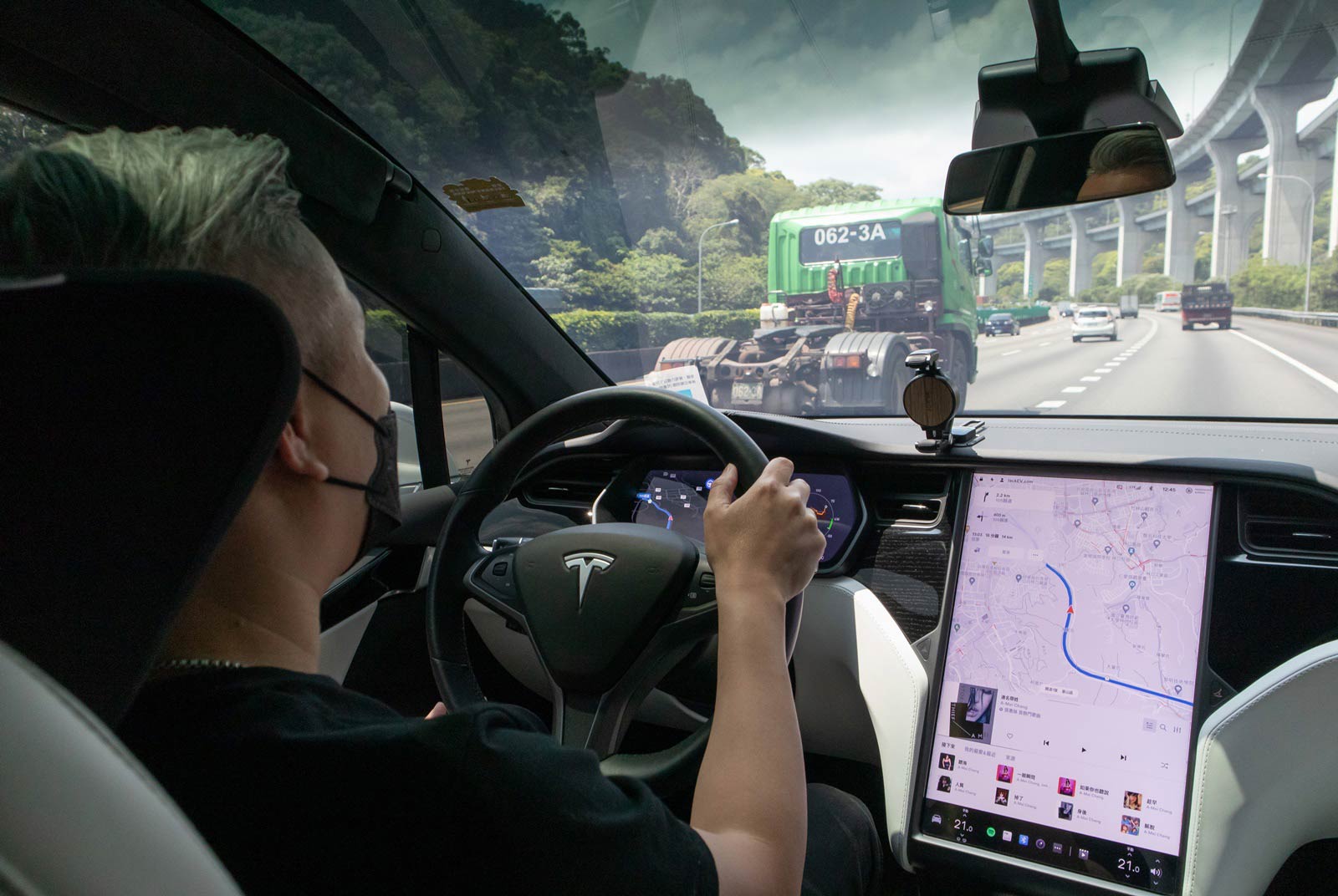Lessons from first fatal highway accident in Taiwan involving assisted driving

Source:Ming-Tang Huang
In March, the first fatal car accident involving a Tesla crashing into a work truck took place on a Taiwanese highway. Last year saw 36 similar accidents across the country. As we face the dawning of the era of the self-driving car, how should Taiwan face the challenges ahead?
Views
Lessons from first fatal highway accident in Taiwan involving assisted driving
By Chiayi Linweb only
Around 10:00 p.m. on the evening of March 7, a Tesla Model 3 traveling northbound on National Highway No. 3 with “autopilot” engaged collided at high speed with a work truck on the inside lane near the 63-kilometer marker. This incident spiraled into a greater tragedy of two collisions resulting in one death and two injuries.
“The collisions were only 20 seconds apart; the driver of the car in front hadn’t even gotten out yet,” related Captain Lin Chih-chung of the National Highway Police Longtan precinct. And although the work truck’s collision protection design prevented any fatalities from the first collision, it could not withstand the impact of the second one, taking the life of a 25- year-old road maintenance worker.
 (Source: HPB)
(Source: HPB)
According to the information publicly available to date, this was the first fatal automobile accident involving an autonomously assisted vehicle on Taiwan’s national highway system.
‘Foreign computers’ have trouble recognizing ‘crash trucks’?
The fundamental reason for the crash was demonstrated immediately by the Tesla owner - the driver, a Mr. Chiang, admitted to the highway police that he stopped paying attention to the road after activating his vehicle’s autonomous-assisted driving mode (commonly known as “Autopilot”), and that the car’s computer was unable to recognize the buffer vehicle (also known as a “crash truck”) attached behind the work truck, thus causing a cascade of crashes.
“These crash trucks are the biggest bug for autonomous cars right now,” relates Jack Lin, a Tesla owner.
These buffer vehicles, which consist of two metal coils on beds hitched behind the work truck, resembling a scorpion tail, have also been dubbed “scorpion trucks” in Taiwan.
Lin says that the buffer vehicles have an unusual appearance. He relates that he has been a Tesla driver for over five years, and has noticed marked improvements in the car’s on-board computer’s ability to see. However, this type of crash truck cannot be recognized accurately, and is often shown as a blurry truck shape on the car’s dashboard display. So whenever he sees one on the highway, he takes early preemptive action and takes over the driving to go around it.
The trucks’ unique metal coils can withstand an impact of over 100 kilometers per hour (KPH), absorbing the impact and reducing potential injuries and fatalities.
And it is precisely this unusual design and appearance that has made these buffer vehicles the biggest blind spot for autonomous-assisted vehicles in Taiwan.
“Data on Taiwan’s buffer vehicles is probably quite scarce in databases collected from autonomous vehicle testing and training abroad, or they are of different shapes,” relates Chiu Wei-chen, associate professor in the Department of Computer Science at National Yang Ming Chiao Tung University.
Last year, Taiwan’s Freeway Bureau began recording statistics on the correlation between road work and maintenance operation collisions and cars in which assisted driving was activated. The bureau found that of 79 total accidents involving work trucks on the national highway system, 36 of the passenger vehicles were equipped with autonomous-assisted systems.
During the week of March 7, the same week of the deadly accident detailed above, three similar accidents occurred. The automobile brands implicated in these accidents ranged from Tesla to Lexus and Skoda, all of which had been operating under their respective autonomous-assisted driving systems. Clearly, the “crash truck” is a fatal flaw across various systems.
Currently, cars equipped with autonomous-assisted driving systems sold on the market in Taiwan are classified as L1 or L2 level. According to regulations, the driver must monitor the car’s operation at all times. However, as driving automation technology progresses, owners are increasingly likely to just let go even though the companies strongly advise against this for safety purposes.
Under these circumstances, is it practical to pin people’s lives to the self-discipline of drivers?
The more advanced a car’s self-driving functionality becomes, the less vigilant the drivers tend to become. And when those rare errors occur, accidents inevitably take place in the blind spots of both humans and automobiles.
“At this point, the problem is that, although full autonomous driving is still a long way off, the era of more highly-automated driving is nearly upon us, and there is no agency in charge of it,” laments Lee Kang, associate professor of mechanical engineering at National Taiwan University, and senior specialist on the Taiwan Transportation Safety Board.
In the United States, the National Highway Transportation Safety Administration was established over half a century ago in 1970 under the Department of Transportation. This agency has recently begun issuing safety standards for autonomous cars, explicitly requiring that autonomous car manufacturers define how to safeguard passenger safety, and that all collisions be reported to the NHTSA.
 (Source: Ming-Tang Huang)
(Source: Ming-Tang Huang)
A German court has even banned Tesla from using the term “autopilot” in its promotional communications, so as not to mislead consumers.
Yet Lee relates that oversight of autonomous-assisted vehicles in Taiwan is currently lacking action, and “no such agency like the NHTSA even exists under the Ministry of Transportation and Communication in Taiwan.”
 (Source: Ming-Tang Huang)
(Source: Ming-Tang Huang)
Accordingly, he calls for “Taiwan’s supervisory agencies to establish dedicated mechanisms and monitor power storage.”
This not only concerns road safety, but also the potential sound development of Taiwan’s electric car industry.
Have you read?
♦ Will electric vehicles send Hon Hai’s gross margin over 10%?
♦ Taiwan’s Tesla Boom, and Looking for More
♦ Exclusive: Foxconn CEO Young Liu on his EV ambition
Translated by David Toman
Edited by TC Lin
Uploaded by Penny Chiang






